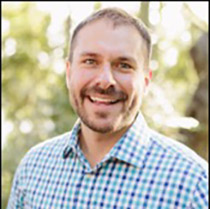MedTech Internet of things (IoT) start-ups and early-stage innovators often launch with a minimum viable product, or MVP, a version with just enough features and stability to be used in clinical or field-testing. With the right MVP, companies can prove technical feasibility and position themselves for success with investors.
Along the path to a feasible MVP, teams can sometimes get stuck in an “almost there” phase of the project, which can be frustrating and feel like they are not moving forward. When this happens it is often due to new features and added requirements (also known as mission creep) that can actually move the finish line further away from week to week.
Nearly every founder that creates a new product is changing what the product should be as they adjust to find the product market fit along the way. Founders gain stakeholders with new opinions, they learn more about the engineering process, and they generally unfold the project requirements as they go. Flexibility is necessary, but if founders aren’t careful, they risk losing control of their engineering process along the way.
Subscribe to the MedTech Intelligence weekly newsletter to stay up to date on the latest news and information on medical device development and regulation.
A common condition known as coordination neglect is a big part of this. If standups and status update meetings are all about individual task completion and the sprint board has lots of activity but quarter-to-quarter there is nothing meaningful to show for it, the project could be suffering from coordination neglect. At that point, the engineering process becomes more about engineers rapidly doing things—any things—than it is about creating a single product for release.
This is a critical reason why it is essential to have a systematic plan and development strategy in place. Founders should be spending their time updating the plan and communicating with their engineering teams and other stakeholders to keep their team coordinated. Avoid these common pitfalls and follow a few best practices to efficiently and effectively get from concept to commercialization at a record pace.
Common Pitfalls to Avoid
Extraneous features. Keep the product on its strategic trajectory by learning to say “no” to unnecessary features. Ask yourself, does this effort help us meet the goals in the plan? If not, say “no.”
Coordination neglect. Focus on the big picture, not just individual productivity and task completion. Failure to create a seamless and functioning product on time usually happens because of coordination neglect: a failure to plan and a failure to consider how all the parts of the product will come together.
Chaos. Agility and speed are second nature to tech start-ups. Develop a systematic plan to build and roll out the next iteration and set of features to avoid chaos.
Best Practices to Embrace
Focus on the most important and most risky challenges. Identify the technical or user-acceptance challenges that could kill your product, and solve those first. The fun, easy problems are rarely important for the MVP so don’t get distracted by aesthetics, size, battery life, or user-friendliness in the early days (unless, of course, one of those is a most important or risky challenge).
Discipline the work toward developing only what you really need for the MVP. You have some near-term goals for clinical or field tests. What does the product have to have to achieve the goals and why? If there is not a clear use case for the feature in the next 12 months, you probably don’t need it. If you’re falling into “well, it might be nice to have…” or “in the future we will want to be able to…” then start cutting features and exerting ruthless focus on near-term goals.
Expertise can ensure your team is staffed with the best possible talent to achieve your goals. In the long term, it is almost always more cost-effective to build things “the right way” with experienced, senior engineers than it is to build things “right away.” Senior engineers solve problems faster and more completely and they will help you identify which high-risk challenges are worth solving early.
On your way to delivering impactful IoT-driven innovation, utilize a coordinated, integrated approach to stay focused on the whole product (not just the latest feature). This will help you deliver on your business and innovation goals. Remember that decisions at this stage will have a long-term impact on your success with investors and in the marketplace.
Case Study: It’s OK for a Start-up to Start Over
Vena Vitals, a medical technology start-up based in Irvine, California, is developing a continuous noninvasive blood pressure monitor in the form of a soft, flexible sticker. Vena Vitals needed to create a prototype for clinical testing. When they brought Geocene in to help with their device design, they were stuck in the “almost there” cycle of developing new features and fixing old bugs resulting in clinical readiness always being a couple of months away.
We took the following three steps to get them to a clinical trial-ready MVP:
1. Needs Assessment Research
The Vena Vitas team focused on a few pesky bugs and features that needed to be addressed before clinical tests. To establish context and strategy, we conducted multiple hours of interviews and focused on the state of the product, the needed features, and the short- and long-term goals. It became clear that the core challenges were not the few remaining bugs and features, but rather some more fundamental architectural challenges. We developed a tailored approach to custom engineer their MVP.
2. Planning and Requirements
Complex projects require a shared vision. They require a well-thought-out plan, timeline, and budget. An engineering research project provided that plan, timeline, and budget. The research project began with the needs assessed in step one, and the gap between that and a review of Vena Vitals’ existing hardware, firmware, and mobile app. We analyzed potential parts, their available features, and the interoperability between parts and functions. Any feasible tradeoffs were discussed before building anything. A little extra time spent up front would drastically reduce thrashing down the road. In this case, it was best to remake the hardware and firmware and to build on top of the existing mobile application. It truly is OK for a start-up to start over.
3. Development
Once the team weighed tradeoffs, we put a plan in place and got it approved. We designed the hardware solution and sent out the first prototypes for manufacturing in just one month. The coordinated development of the product’s hardware, firmware, and mobile app was done during regular meetings between engineering and leadership teams to maintain coordination. By focusing meetings on the established plan, our development stayed on the right path with meetings taking less than an hour a week.
With the right needs assessment, planning, requirements, and development expertise and work, Vena Vitals had their clinic-ready MVP and could finally enter clinical trials to begin collecting the needed data.







